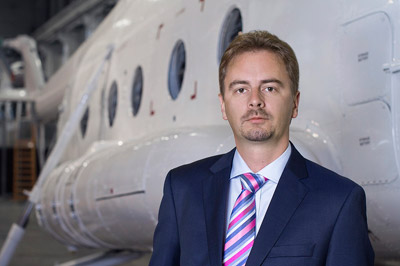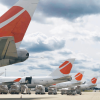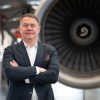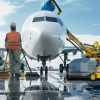 Despite the previous buzz across the industry, the global rotorcraft community has not greeted the recent opening of Airbus Helicopter’s new training facility in Germany with a unanimous hurray. In fact, it has further fuelled the worldwide debate on whether rotorcraft industry will ever take stronger action to battle the ever-growing maintenance personnel challenge. According to the latest Global Helicopter Mechanic Shortage Survey, more than a third of the currently employed helicopter technicians are over 50 years of age and little is done to attract new talent. Nonetheless, there are ways – but we have to act now.
Despite the previous buzz across the industry, the global rotorcraft community has not greeted the recent opening of Airbus Helicopter’s new training facility in Germany with a unanimous hurray. In fact, it has further fuelled the worldwide debate on whether rotorcraft industry will ever take stronger action to battle the ever-growing maintenance personnel challenge. According to the latest Global Helicopter Mechanic Shortage Survey, more than a third of the currently employed helicopter technicians are over 50 years of age and little is done to attract new talent. Nonetheless, there are ways – but we have to act now.
More than 5000 machines are expected to supplement the global fleet until 2019. Unfortunately, the existing technical manpower capable of maintaining these helicopters is getting old and shrinking fast. For instance, in the U.S. the average age of maintenance technicians is 53 while in Australia it extends to mind-boggling 58, says Dassault. It is obvious that something must be done to attract young engineers who will be there when a third of the global rotorcraft technician workforce retires, that is, in the next 10 years.
“In early 2012, the CEO of Bell Helicopter expressed his frustration about the fact that the profession of an aviation technician was no longer popular and such tech giants as Apple and Google were gobbling up the best talent. Unfortunately, we can now see that his fears were completely justified,” comments Anatolij Legenzov, the CEO of Helisota. “Despite the increasingly old rotorcraft maintenance workforce, there’s still a considerable lack in effort to attract a new generation of qualified personnel. As it is, almost 60% of all workers state that the profession is not properly promoted, making the industry’s chances to compete with very innovative and brand-conscious Silicon Valley companies pitiful. However, things can be changed if we turn our focus to the correct target group – generation Y.”
As the majority of currently working technicians – the so-called baby boomers – are about to reach the retirement age, generation Y or the so-called millennials are gradually  taking their place in industries all over the world. And although at the moment only 14% of all rotorcraft maintenance personnel are considered to belong to this highly tech-savvy age group, the number is expected to skyrocket in the near future. In fact, according to Deloitte, millennials will account for 75% of the global workforce by 2025.
taking their place in industries all over the world. And although at the moment only 14% of all rotorcraft maintenance personnel are considered to belong to this highly tech-savvy age group, the number is expected to skyrocket in the near future. In fact, according to Deloitte, millennials will account for 75% of the global workforce by 2025.
The good news is that more than three quarters of gen Y representatives deliberating upon the choice for their future careers name the degree of innovation as their primary criterion both industry and company wise. However, as the Helisota executive notes, many maintenance schools lack the funds to purchase new-generation aircraft for training thus significantly compromising their attractiveness to the innovation-driven potential workforce. In addition, according to experts, the new generation is completely different from baby-boomers not only in attitude towards work field but also in the way of learning new things.
“We definitely have to change the way we teach. This generation learns very differently and we have to adapt in order to maintain the magnetism of the industry,” comments Anatolij Legenzov, the CEO of Helisota. “For instance, practices introduced by FlightSafety can be a very good example of adjusting the learning processes to new gen students. They use iPads, tablets and touch screen operated virtual cockpits to keep them interested whilst maintaining the highest quality of training. The reality is that aviation is slowly losing its magic. The only way to effectively address the accumulating workforce deficiency is to completely reorient so that we could keep up with the technological innovations. Otherwise we will fail to attract and train future generation of aviation experts.”





